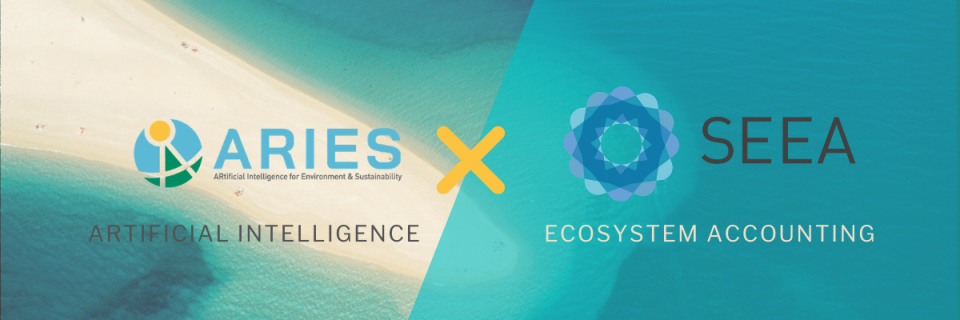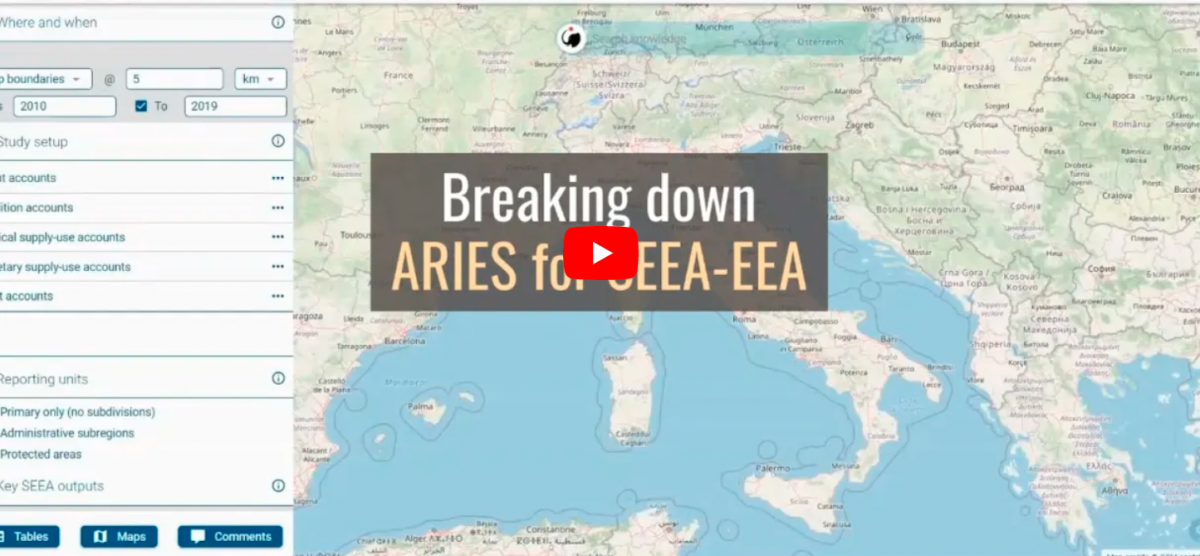ARIES for SEEA: Rapid generation of natural capital accounts

The international Research & Innovation platform ARtificial Intelligence for Environment and Sustainability (ARIES) is currently developing an easy-to-use application for SEEA Ecosystem Accounting (SEEA EA), with the intent to also eventually support compilation of some Central Framework accounts, enabling ecosystem account production anywhere on Earth.
“Our goal is to produce rapid and standardized ecosystem accounting. We want to support the efforts to adopt the SEEA EA as a statistical standard by providing a consistent tool that enables to implement natural capital accounting (NCA) even in countries with limited technical expertise,” explains ARIES lead investigator Ferdinando Villa.
The SEEA EA is a statistical framework for ecosystem accounting, developed under the lead of the United Nations with the participation of many experts, that aims to provide agreed concepts, definitions and classifications to compile extent and condition of ecosystems and the services they provide. One of the distinguishing characteristics of the SEEA EA is that it takes a spatial approach. However, spatial modelling of ecosystem accounts requires substantial time and expertise and presents some challenges for data-limited countries.
ARIES for SEEA provides initial functionality for assessing ecosystem extent (using the new IUCN Global Ecosystem Typology), condition (including pilot set of accounts for forests, which can be easily expanded to other ecosystems and condition variables), and physical accounts for selected ecosystem services using earth observation combined with the appropriate biophysical models.
Thanks to the use of artificial intelligence (AI) – specifically semantics and machine reasoning - the ARIES team has managed to automate data and model integration to provide their transparent assembly and reporting in a faster, cheaper way.
These techniques allow a computer system to recognize the precise content of a dataset or model, and to choose the best-available combination of data and models (from global to local) for the analysis context. For example, the reuse of national data is automatically prioritized over global data, and a crop production account would only include those crops grown in the part of the world where a user’s analysis is focused. With the ARIES technology, experts can contribute their knowledge, data and models more successfully and on a larger scale, with the reuse of past data and models where appropriate.
The ARIES for SEEA EA application already includes features of interest to the environmental modelling community, such as the integration of remote sensing data and access for data and models both for experts and nontechnical users. The ARIES team continues to develop a set of models that run on global data, but that can be easily customized with local data in a way that will automate the reuse of local data where appropriate.
“ARIES for SEEA EA has a custom web interface so that, when running the application, users will be able to select which natural capital accounts and indicators they want to compile, and how they want to aggregate those,” adds ARIES NCA expert Ken Bagstad. The ARIES application will go to the web, search for the needed data and models, run the needed computations, and return the results to users in an automated, user-friendly way.
Testing ARIES for SEEA EA
The prototype ARIES for SEEA EA is being tested in a number of countries, including by the national statistical offices of India and South Africa, both pilot countries under the Natural Capital Accounting and Valuation of Ecosystem Services project (NCAVES).
ARIES for SEEA EA allows all countries, including those with limited data and capacity, to compile SEEA accounts using global datasets. In addition, the team is also exploring ways to integrate finer-scale national and subnational data to improve on the estimates of ecosystem extent, condition and ecosystem services. The challenge of using national data sources is that these data are often heterogeneous, limiting its immediate interoperability. However, with adjustments to how the data are served and annotated, interoperability is typically possible.
“We are continuing to improve the pipeline to easily integrate data in the ARIES system, in order to provide additional flexibility for countries that have better data,” explains Bagstad. This will be done through incorporation of statistical data using Statistical Data and Metadata eXchange (SDMX) standards, the international initiative that aims at standardising and modernising the exchange of statistical data.
The United Nations Statistics Division (UNSD) plans to convene further discussions in Spring 2021 about how various national statistical offices and research groups can improve the data and model interoperability underlying the SEEA, based on the lessons learned in developing ARIES for SEEA.
“By providing an AI-enabled integrated modelling and data platform on which many sources of information can be combined, ARIES for SEEA aims to offer a cheaper and faster way to produce more accurate and fully-transparent SEEA accounts,” concludes Ferdinando Villa.
Watch the video to see a demo by clicking on the image below.

